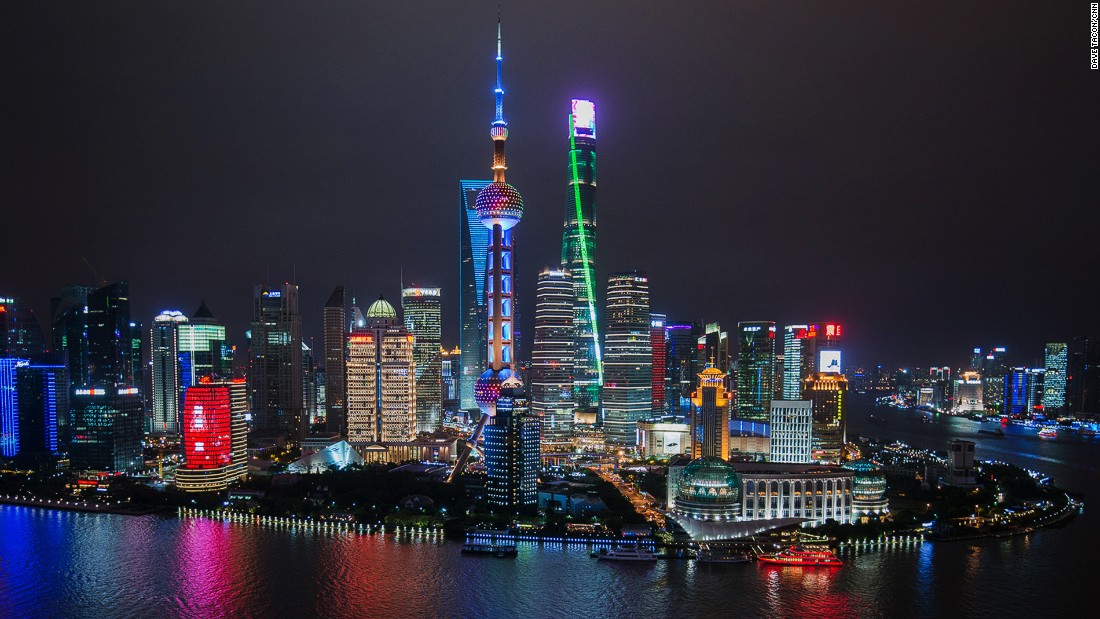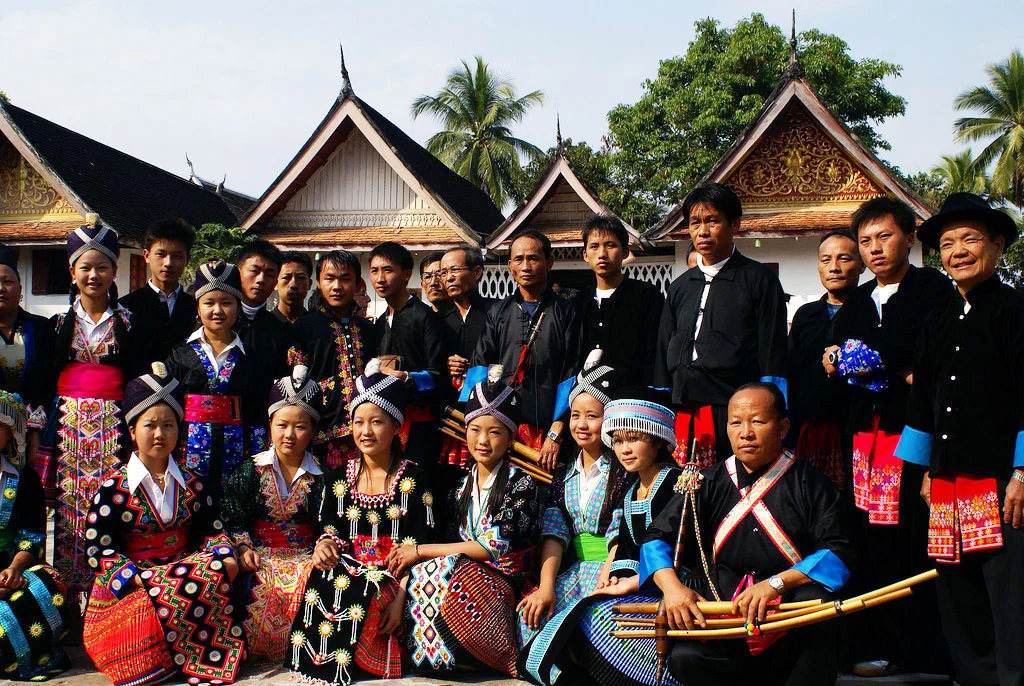Disclaimer: Please note that the views expressed below represent the opinions of the article’s author. The following work does not necessarily represent the views of the Synergy: Journal of Contemporary Asian Studies.
Ever since the pre-1949 era, international and colonial presence in Shanghai has made the city a symbol of both China’s colonial subjugation and its modernity and cosmopolitanism.[1] In the recent decade, the Chinese Communist Party expands on Shanghai’s cosmopolitan identity in pursuit of greater structural competitiveness.[2] At the same time, the CCP’s tradition of promoting cultural centrality seems to be in direct opposition to the idea of cosmopolitanism and multiculturalism. Unlike the Canadian approach to multiculturalism in which all cultures are to be in equal co-existence, the Chinese model posits Chinese dominance and puts foreign identities at the periphery of its societal composition. In this essay, I will focus on foreigners in Shanghai, whose experiences is that of being at the crossroad of the city’s cosmopolitan and nationalist pursuits. I will critically examine the relations between having two contrasting political undertones in local politics, cosmopolitanism and nationalism, and foreigners’ experience under the combination of these political agendas.
My study is largely based on James Farrer’s thesis that marks the rhetoric of “New Shanghainese” when referring to foreigners as a political strategy grounded in the neoliberal idea that Shanghai is the centre of global capital that needs to attract “talents” from all parts of the world. [3] This is included in Shanghai’s strategy to assert cosmopolitanism as part of its city branding – an important tool applied by governments to enhance their cities’ global competitiveness toward facilitating the flow of investments, knowledge workers, tourists, and new businesses.[4] The case of Shanghai also confirms the strong connection between the growth of GDP and Foreign Direct Investments.[5] In the pursuit of cosmopolitanism, Shanghai expanded its immigration laws, intended to better accommodate the broadened inflow of foreigners. However, under increased privileges, foreigners in Shanghai still form segregated enclaves and seem unable to fit the notion of Shanghainese citizenship.[6] This is manifested through the concentration of the foreign population in the city, in areas such as Hongqiao Town in Minhang District, Huamu Street in Pudong New Area, and Hongqiao Street in Changning District.[7] Many locals believe that the failure to integrate is due to unamendable cultural and racial differences.[8] My goal is to politicize this narrative and to argue that foreigners in Shanghai are systematically denied the full definition of Shanghainese citizenship because of the combined effects of cosmopolitan and nationalist policies.
Firstly, it is important to address the unequal treatment within the foreigners’ community. New provisions of privileges and welfares are only applied to selected groups of foreigners, especially highly-skilled foreign managers and professionals who are thought to be important for local economic development.[9] In order to facilitate the arrival of top talents, the Shanghai Administration of Foreign Experts Affairs (SAFEA) issued stricter classification criteria for foreigners asking for a residence permit to work in China, giving priorities to the top and professional talents while restricting the possibility of residence for unskilled workers.[10] In particular, the rhetorical shift in China’s policies in promoting the inflow of foreigners masks the fact that these privileges only apply to the so-called “foreign talents.” For others, these changes promote stricter monitoring and control.[11] The “Exit-Entry Administrative Law of the People’s Republic of China” in 2012 concretized the preconditions for foreigners to acquire permanent residence and stipulates that only those who have made remarkable contributions to Chinese social and economic development may obtain it.[12] On the other hand , the new law also introduces additional measures for stricter supervision of the entry of foreigners. It specifies penalties for foreigners and for persons supporting them, including higher fines for activities related to illegal entry, stay, or work.[13] This means that foreigners who do not fit the Shanghai Municipality’s set of criteria are denied access to services that other citizens have, which leaves them socially and financially disadvantaged. This is to argue that the generalization that foreigners are highly appreciated in Shanghai overlooks the systemic inequalities within the community as a result of policies designed to attract top talents.
Secondly, policies to establish a cosmopolitan city involves displaying Shanghai’s diversity to the world, and thus, it is in the city’s interest to maintain the image of foreign “otherness”.[14] With their distinct customs and habits, their presence enriches the profile of Shanghai as an international metropolis.[15] This quality is highlighted and preserved by creating special laws for foreigners, emphasizing cultural differences through state-run TV channels, and essentially aligning them in a separated class. State-run media channels in Shanghai often refer to these foreign residents as yang jumin (foreign residents), which hints that these people living in the city, no matter how culturally or politically integrated they are, form a separate category of urban citizens.[16] Moreover, the goal to preserve the segregation of foreigners is reflected in the city’s policies on urban management. Wang and Lau argue that the development of foreign enclaves is central to the local government’s pursuit of structural competitiveness. In the case of Gubei New District, the construction of the image of the superior residential location is achieved through the adoption of “Continental European Classic Style” architectures, English-speaking services and international schooling programs, etc.[17] By grouping foreigners in distinct neighbourhoods, this strategy successfully highlights their “Otherness”. Another example is Shanghai’s Laowaijie (the Pedestrian Street of Foreigners), which is known as the ideal spot to enjoy the international flavour of the metropolis. With its large numbers of foreign residents and English-speaking bars and restaurants, this place demonstrates that multiculturalism in Shanghai is based on the idea of spatial segregation and the preservation of cultural differentiation.[18] Thus, it is at the core of the Municipal government’s interest to preserve the alienness of foreign residents and to prevent the mixing of foreign and local cultures as a means of facilitating and enhancing the image of a cosmopolitan city.
Thirdly, I will address how municipal cosmopolitanism contradicts China’s nationalist agenda. In his essay “Cosmopolitanism and Nationalism,” Craig Calhoun argues that “growing global connections can become a source of fear and defensiveness rather than appreciation for diversity or sense of ethical responsibility for distant strangers.”[19] Cosmopolitanism and nationalism can come into direct conflict with each other in Shanghai, where Chinese culture and tradition are assumed to be the the foundation of society. To this problem, Shanghai offers its answer by striking a balance between the two ideologies. From there, engaging foreigners in these cultural activities, not only demonstrates the inclusivity and authenticity of the Chinese culture, but foreign residents’ participation in cultural activities further reinforces the image of Shanghai as a highly inclusive and diverse space, where foreigners are welcomed to appreciate Chinese culture while preserving their own habits and customs. Laura De Giorgi included the example in which an Australian man attended the traditional Chinese Lantern Festival. When reporting on stories like this one, the media stresses how Shanghai foreigners are given a chance to discover and appreciate the richness of Chinese tradition.[20] This emphasis results in a discourse that the admiration and appreciation of Chinese culture are central to the practice of multiculturalism. Thus, in Shanghai’s unique approach to Cosmopolitanism, the idea of a “sinicised cosmopolitanism” allows its city to obtain an international profile without jeopardizing its own Chinese identity. Most importantly, the entrenchment of the differentiation between those who identify with the Chinese culture and those who are given a chance to admire it as foreigners, in turn, highlights the presence of diversity and contributes to the internationalization of Shanghai’s city branding.
Combining my three points, I shall conclude by restating that the combined effects of cosmopolitan and nationalist policies segregate foreign residents from the rest of the Shanghainese population. The narrative that foreigners are provided with tremendous benefits to live in Shanghai and are significantly better off than the local Shanghainese needs to be problematized. Many laws in regards to the freedoms and privileges that foreign residents enjoy include unequal applications within the foreigner community, giving absolute advantages to those with talents and professions that are advantageous to the city’s economic development. In terms of segregation, the administration plays a critical role in ensuring that the alien quality of foreigners is preserved and highlighted in order to facilitate the city’s cosmopolitan profile and the arrival of global talents, from which Shanghai builds the infrastructure for becoming the centre of global capital in the neoliberal economic ideal. The approach of “sinicised cosmopolitanism” provides a solution to the contradiction between cosmopolitan and nationalist ideologies. It allows Shanghai to achieve the status of a cosmopolitan metropolis with residents of diverse ethnic, religious, national, and linguistic identities while recognizing the Chinese tradition to be the fundamental component of the urban culture and the bottom-line of all foreign activities in the city. Therefore, the unequal treatment and segregation faced by foreign communities is integral to facilitating the coexistence of both the cosmopolitan and nationalist agendas.
Amy Chen is a contributor for Synergy: Journal of Contemporary Asian Studies, East Asia Section
Bibliography
Bork-Hüffer, Tabea, and Yuan Yuan-Ihle. “The management of foreigners in China: Changes to
the migration law and regulations during the late HuWen and early XiLi eras and their potential effects.” International Journal of China Studies 5, no. 3 (2014): 571-597
Calhoun, Craig.”Cosmopolitanism and Nationalism.” Nations and Nationalism 14, no. 3 (2008):
427-448
De Giorgi, Laura. “Alien Neighbours: Foreigners in Contemporary Shanghai.” Department of
Asian and North African Studies 41, no.2 (2017): 110-119
Farrer, James. “‘New Shanghailanders’ or ‘New Shanghainese’: Western Expatriates’ Narratives
of Emplacement in Shanghai.” Journal of Ethnic and Migration Studies 36, no.8 (2010): 1211-1228.
Larsen, Henrik Gert. “The Emerging Shanghai City Brand: A Netnographic Study of Image
Perception among Foreigners.” Journal of Destination Marketing & Management 3, no. 1 (2014): 18-28
Wang, Jun and Stephen Siu Yu Lau. “Forming Foreign Enclaves in Shanghai: State Action
in Globalization.” Journal of Housing and the Built Environment 23, no. 2 (2008): 103-118.
[1] Laura De Giorgi, “Alien Neighbours: Foreigners in Contemporary Shanghai.” Department of Asian and North African Studies 41, no.2 (2017): 110.
[2] Jun Wang and Stephen Siu Yu Lau, “Forming Foreign Enclaves in Shanghai: State Action in Globalization.” Journal of Housing and the Built Environment 23, no. 2 (2008):103
[3] James Farrer, “‘New Shanghailanders’ or ‘New Shanghainese’: Western Expatriates’ Narratives of Emplacement in Shanghai,” Journal of Ethnic and Migration Studies 36, no.8 (2010): 1216.
[4] Henrik Gert Larsen. “The Emerging Shanghai City Brand: A Netnographic Study of Image Perception among Foreigners.” Journal of Destination Marketing & Management 3, no. 1 (2014): 19.
[5] Wang and Lau, “Forming,” 105.
[6] De Giorgi, “Alien,” 111.
[7] Ibid.
[8] Farrer, “‘New’,” 1217.
[9] Bork-Hüffer and Yuan-Ihle, “The Management,” 576.
[10] De Giorgi, “Alien,” 113.
[11] Bork-Hüffer and Yuan-Ihle, “The Management,” 592.
[12] Ibid, 579.
[13] Bork-Hüffer and Yuan-Ihle, “The Management,” 579.
[14] Ibid, 589.
[15] De Giorgi, “Alien,” 115.
[16] De Giorgi, “Alien,” 115.
[17] Wang and Lau, “Forming,” 103.
[18] De Giorgi, “Alien,” 116.
[19] Craig Calhoun, “Cosmopolitanism and Nationalism.” Nations and Nationalism 14, no. 3 (2008), 429.
[20] De Giorgi, “Alien,” 117.








